Activities
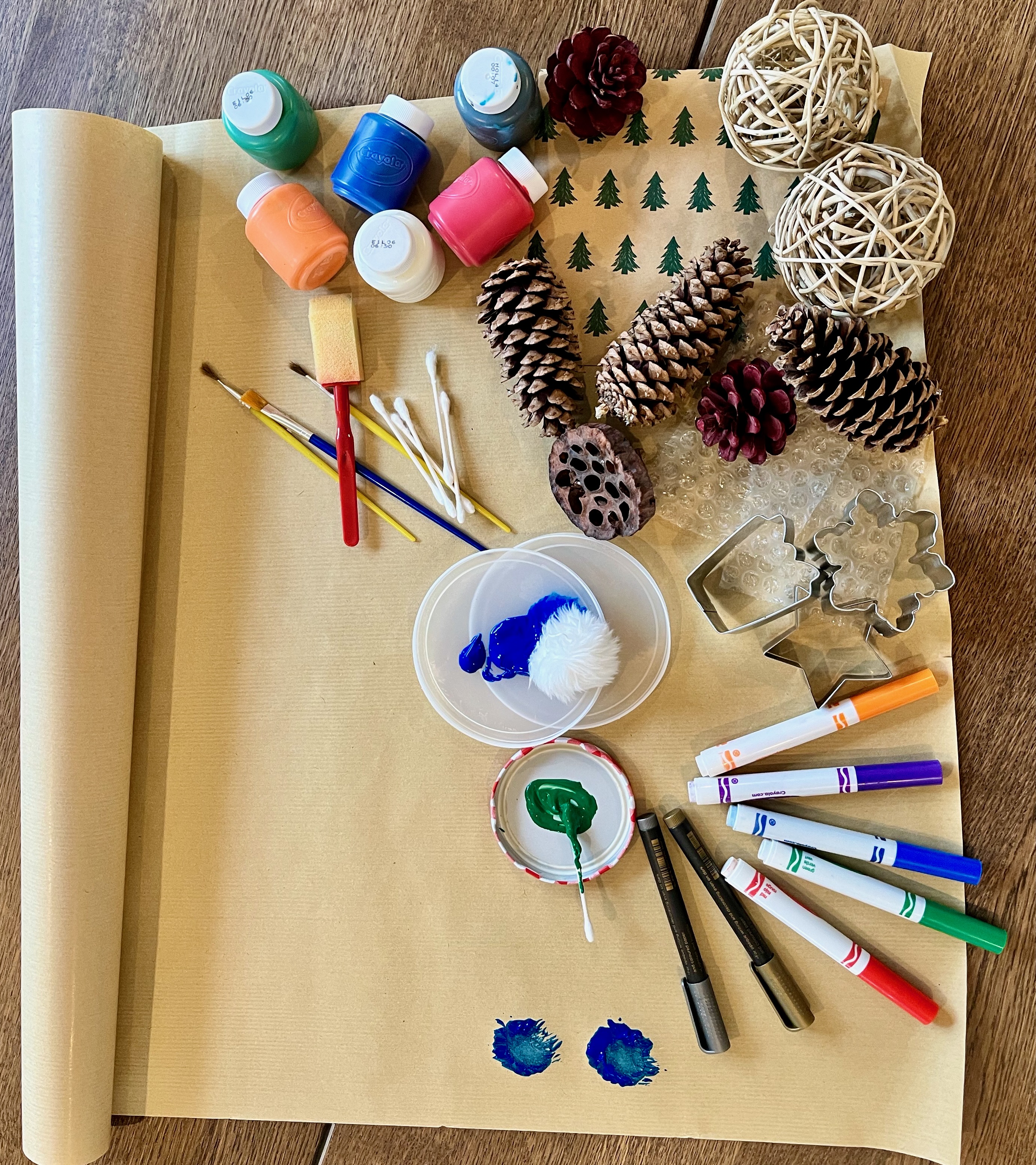
Setting up an open-ended, process-based activity like this is a great way to encourage curiosity, creativity and exploration through undirected sensory play.
What you need:
- Paper
- Paint and other mark making materials (Top Tip: use non-toxic, washable mark making materials)
- Collection ...
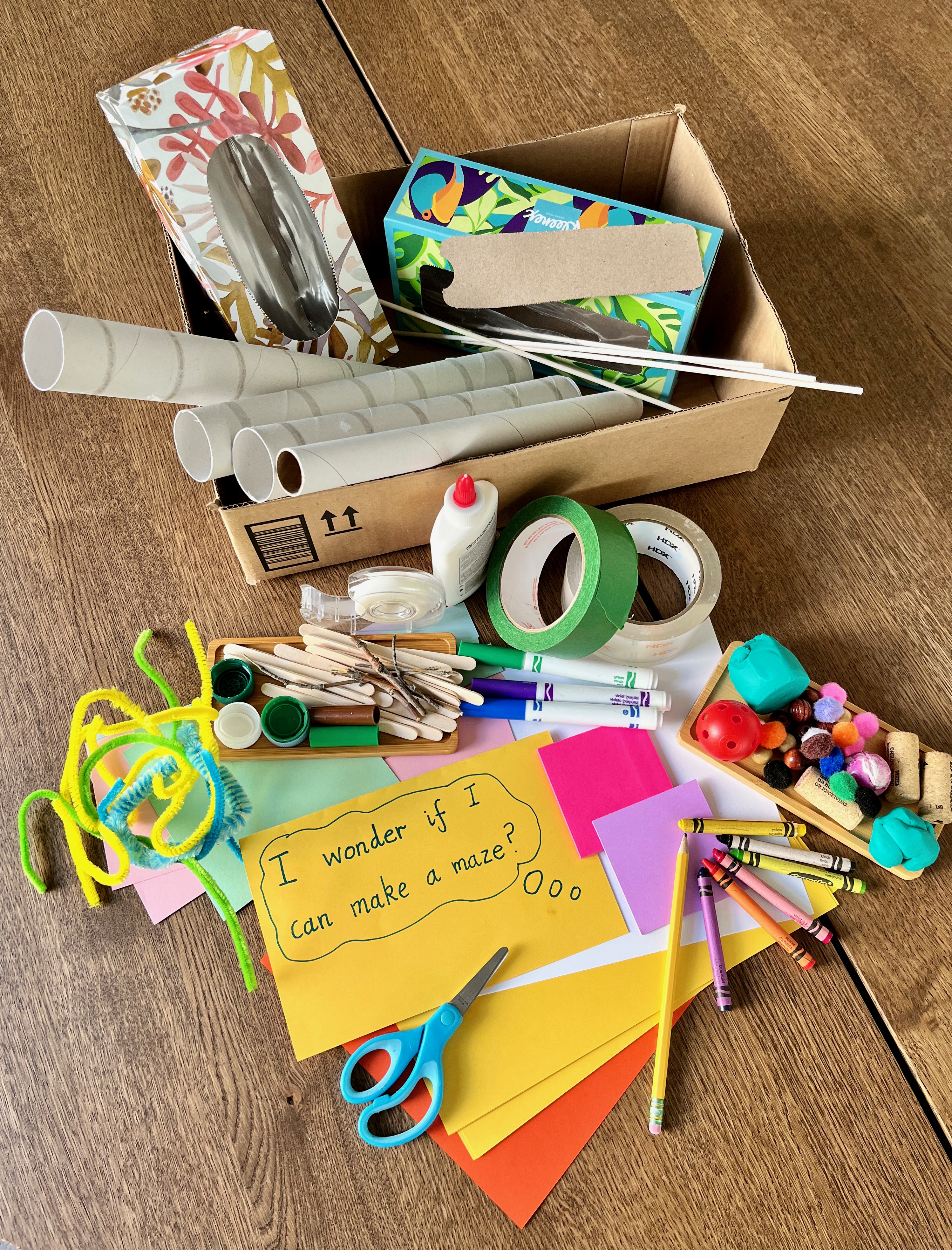
As a child, I loved playing with the little circular plastic ball mazes that I found in Christmas crackers and party gift bags.
I now know that playing with ball mazes develops hand-eye co-ordination and that making them is a great STEM activity promoting the development of a number of skills including designing, constructing, problem-solving, ...
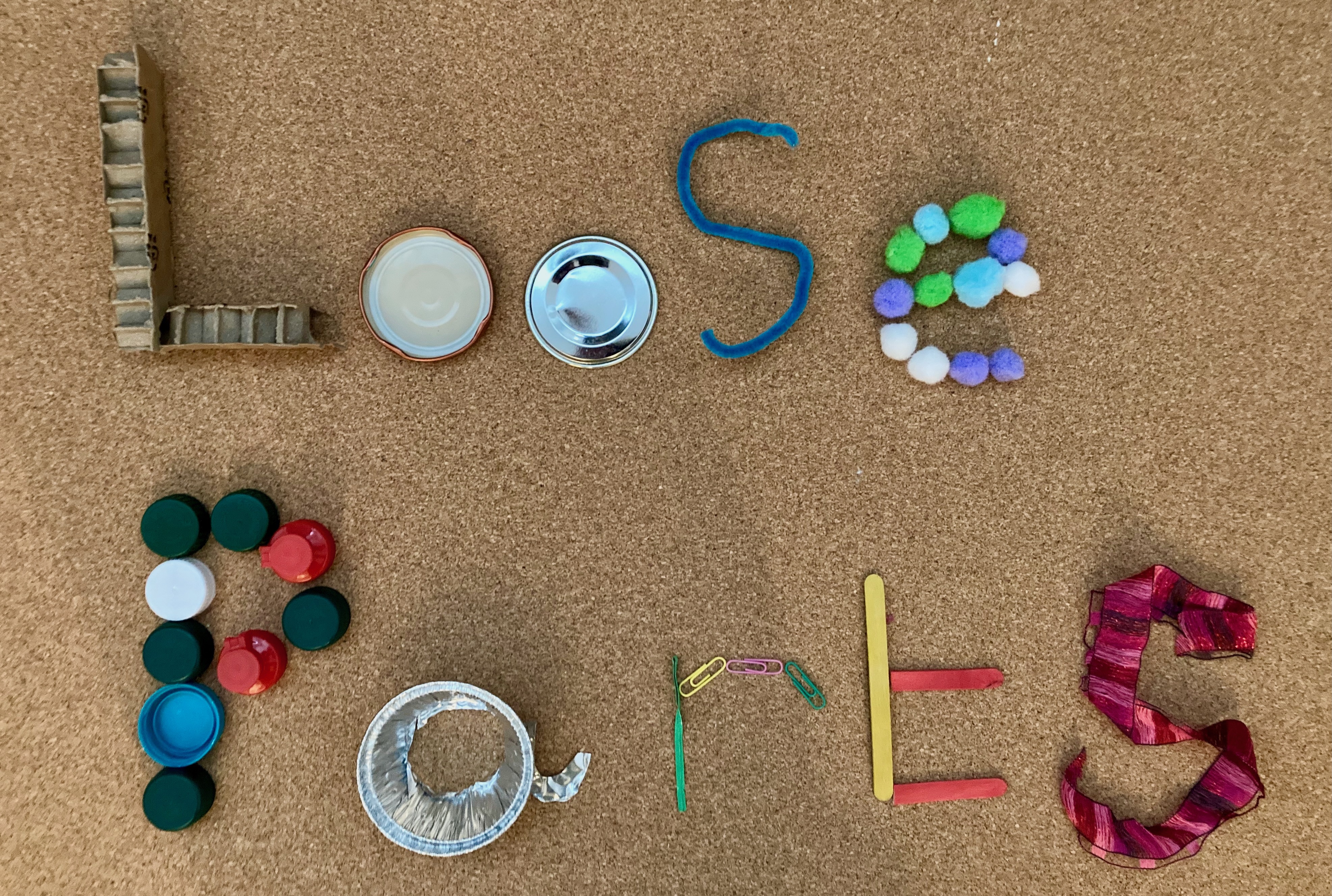
The idea for Loose Parts Play originated from Simon Nicholson's (1971) Theory of Loose Parts.
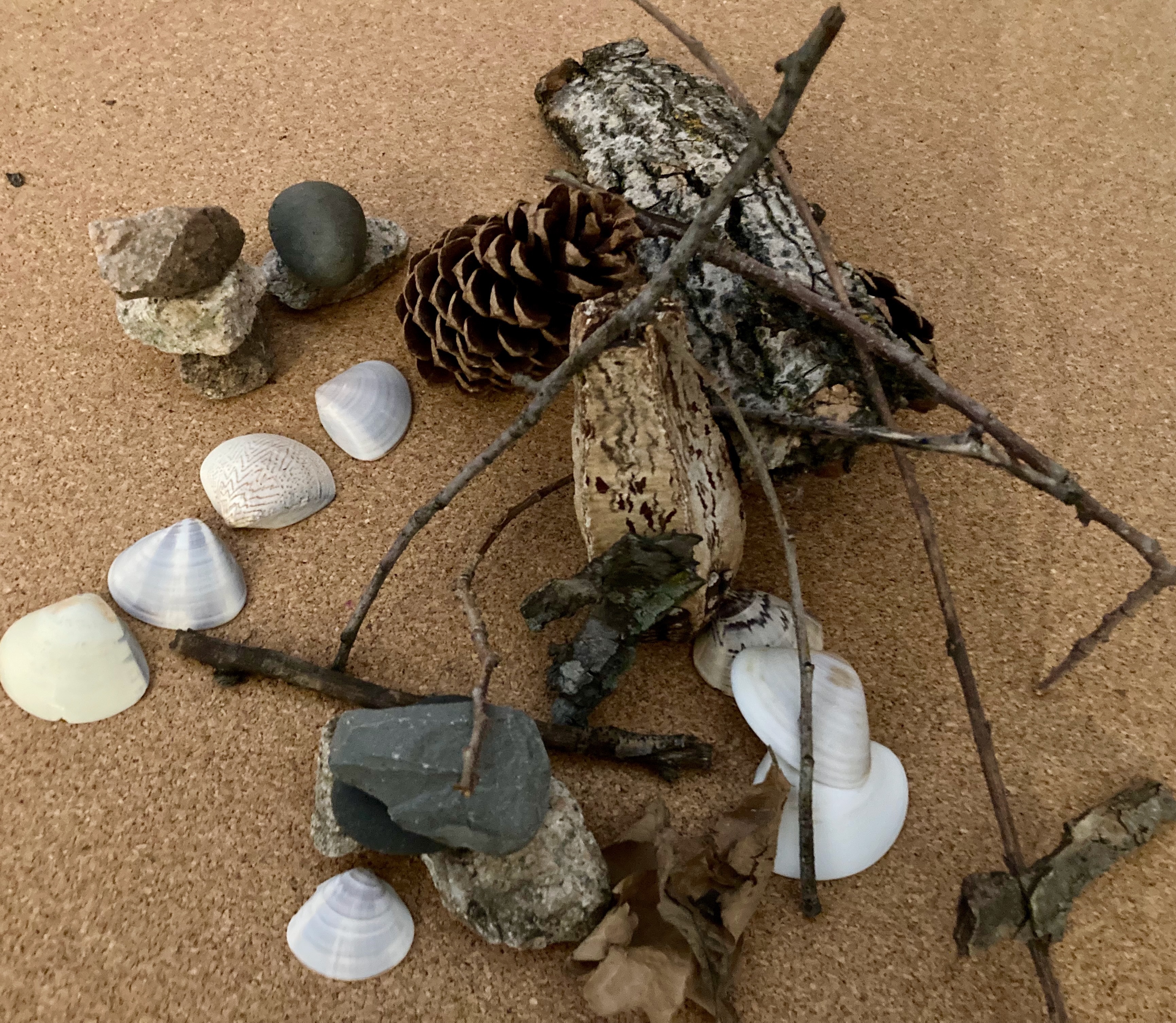
Why use Loose Parts?
Using Loose Parts in play encourages
- creativity and imagination
- exploration ...
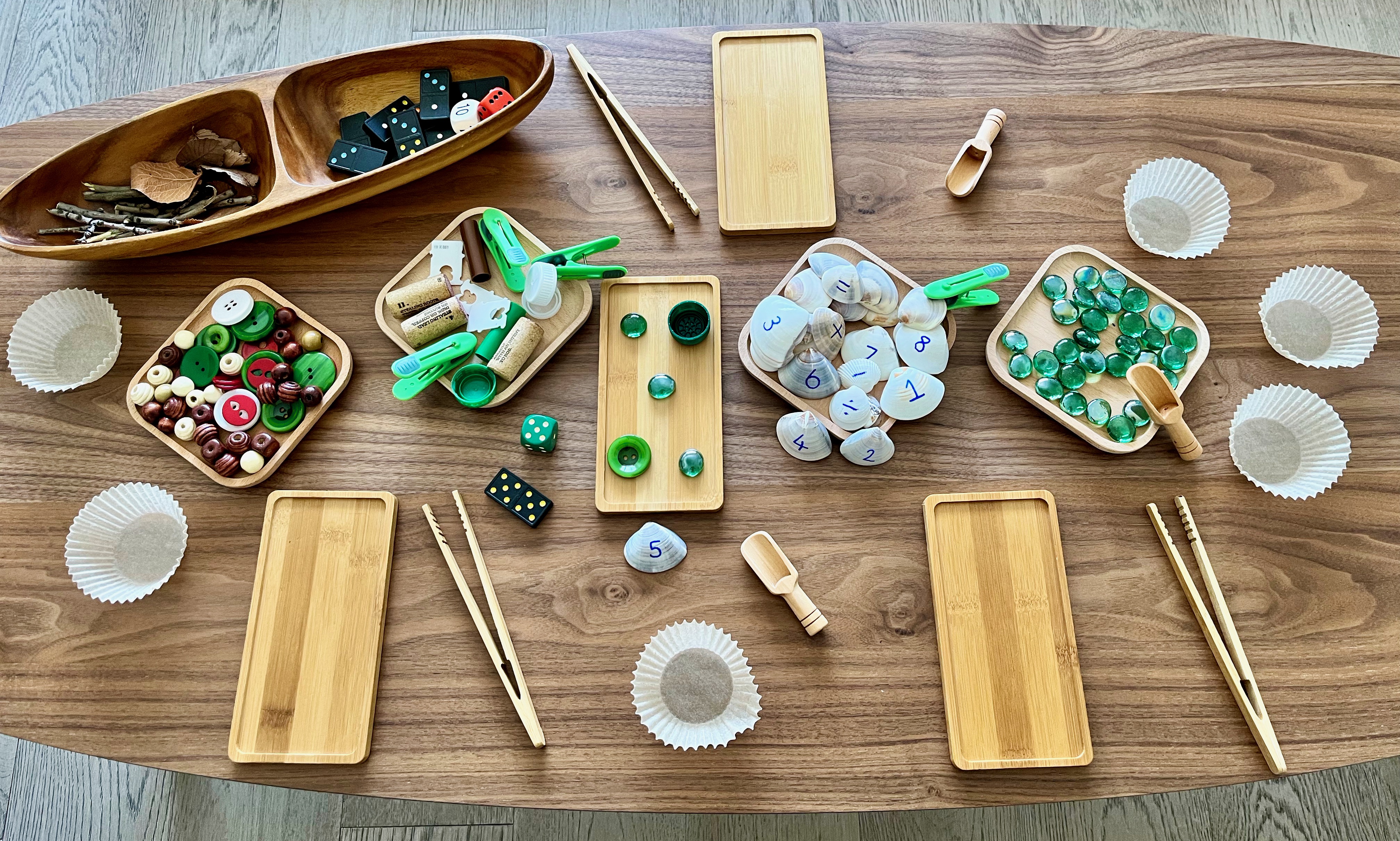
Setting up an invitation to play using natural, manufactured and recycled loose parts (open-ended materials) encourages your child to be curious, explore and discover through undirected play.
Put out things you know will spark your child's interests, e.g shells, beads, buttons, sticks, leaves, bun cases, scoops, clothes pegs ...
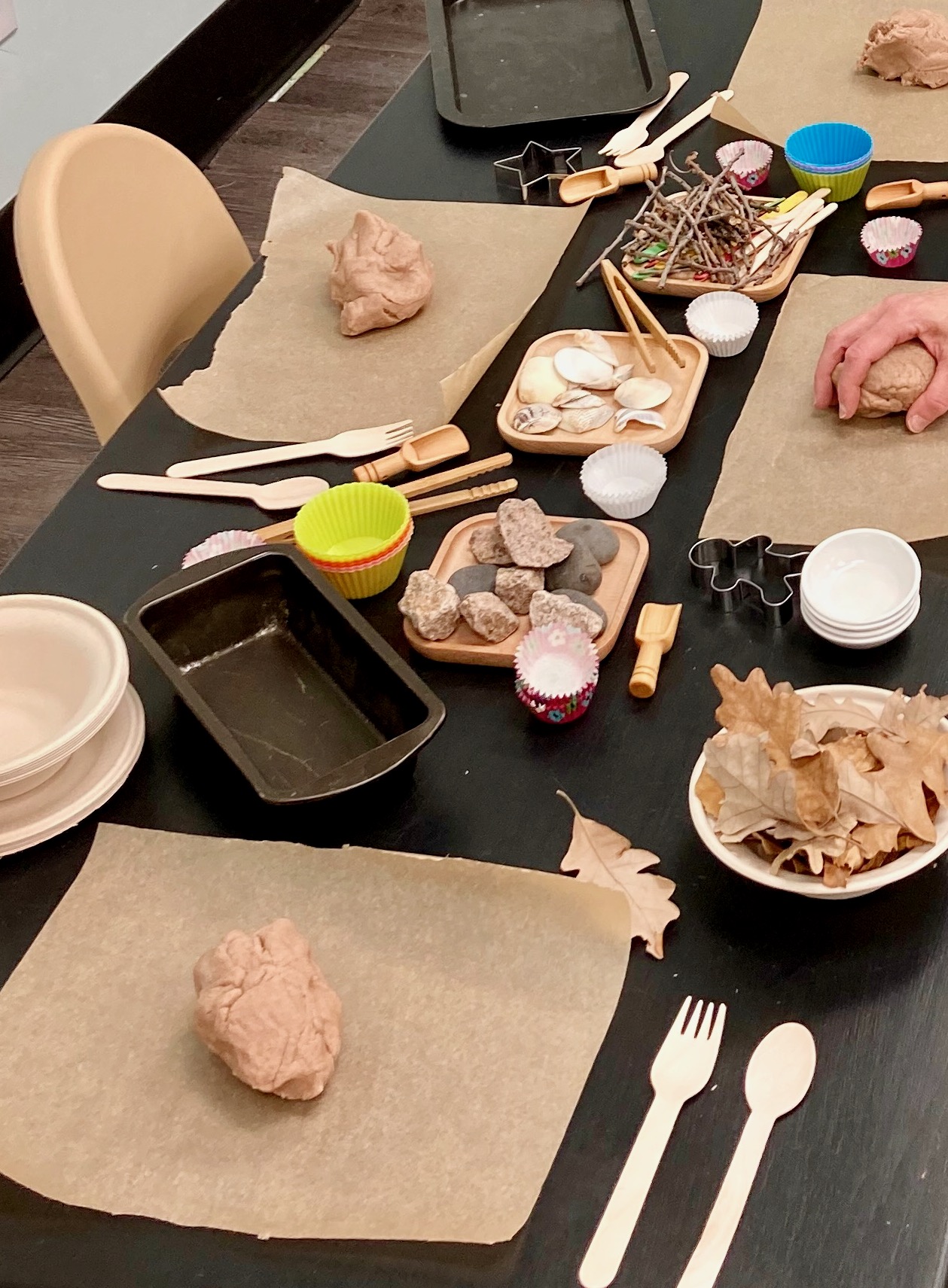
We needed a gluten-free play dough recipe for sensory open-ended, process-based play experiences and tried this one. Given to us by a colleague, the recipe was easy to follow and quick to make, although it did require cooking.
To add an extra sensory element to the play experience, we added a teaspoon of cinnamon to the mixture as we cooked ...
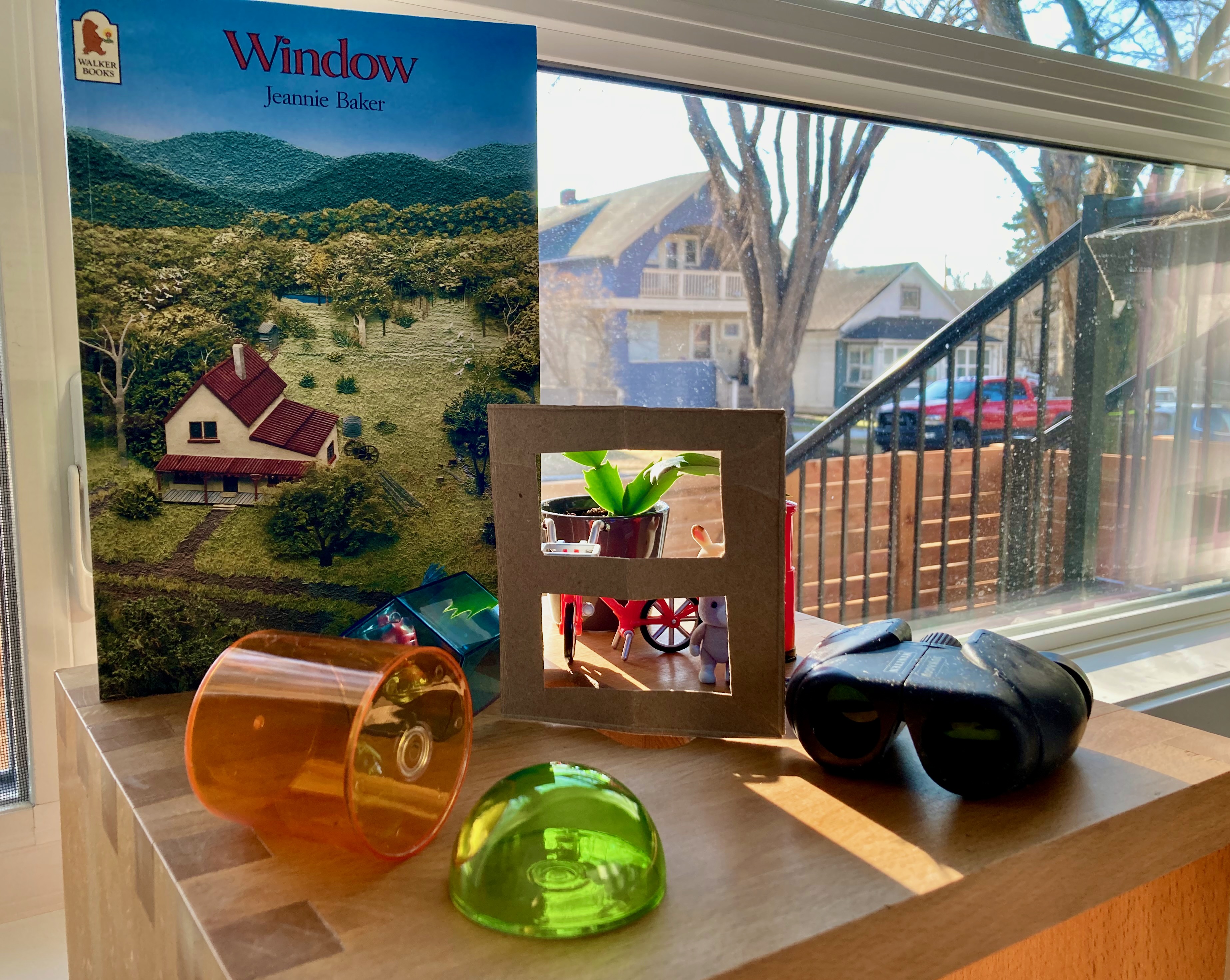
This invitation to play was set up to encourage children to explore the world outside their window and how it changed over time.
"What can you see?"
"I wonder what might change?"
"Why do you think...?
"I wonder what I would see if I went outside and looked in through the window?
Include ...
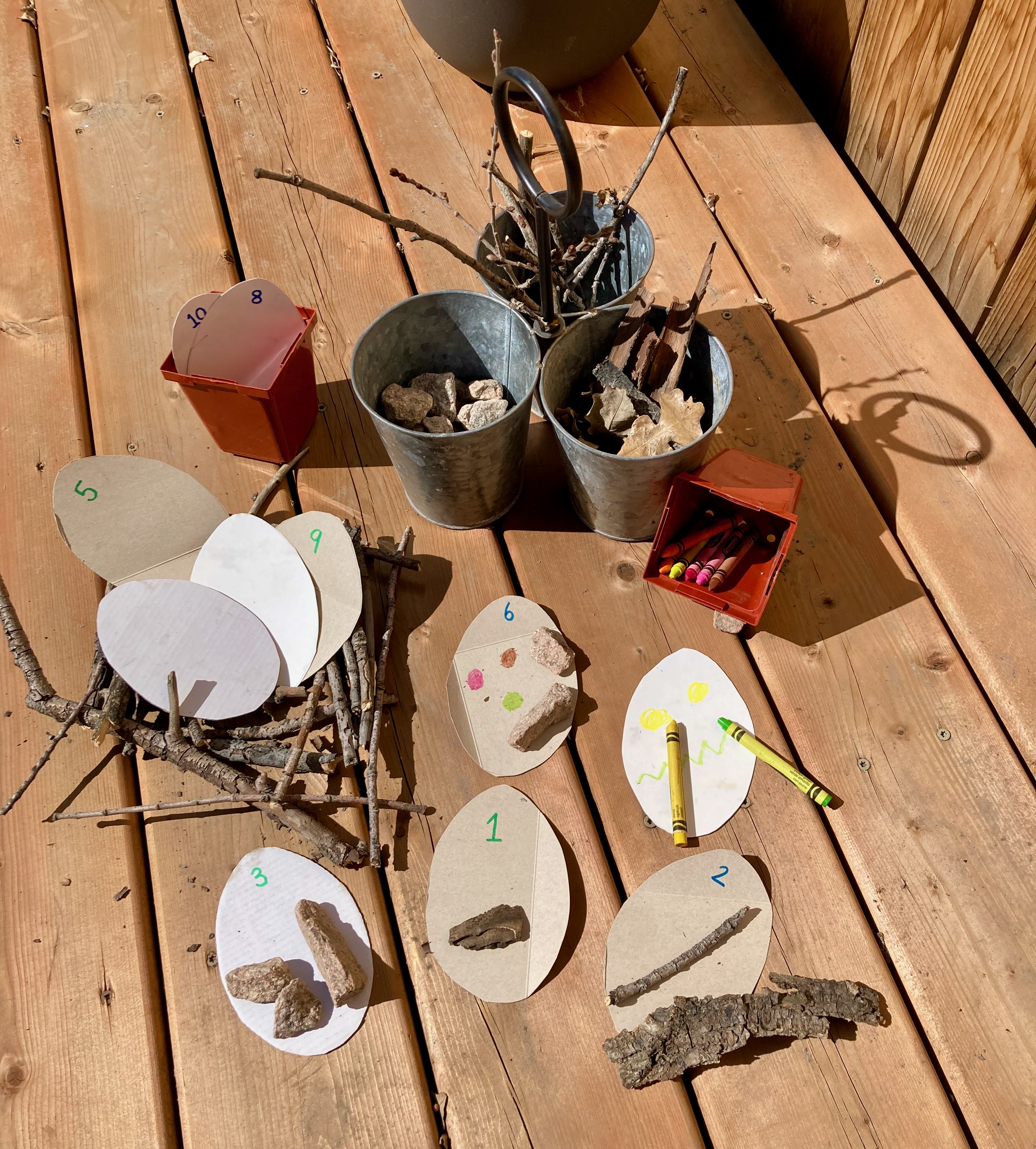
It's great to get outside without wooly hats and gloves and hearing the birds singing again inspired an easy egg themed sensory play activity.
I left some egg-shaped pieces of card, some with numbers written on them, outside with a collection of sticks, stones and leaves and a few crayons. It wasn't long before more sticks and pieces of bark ...
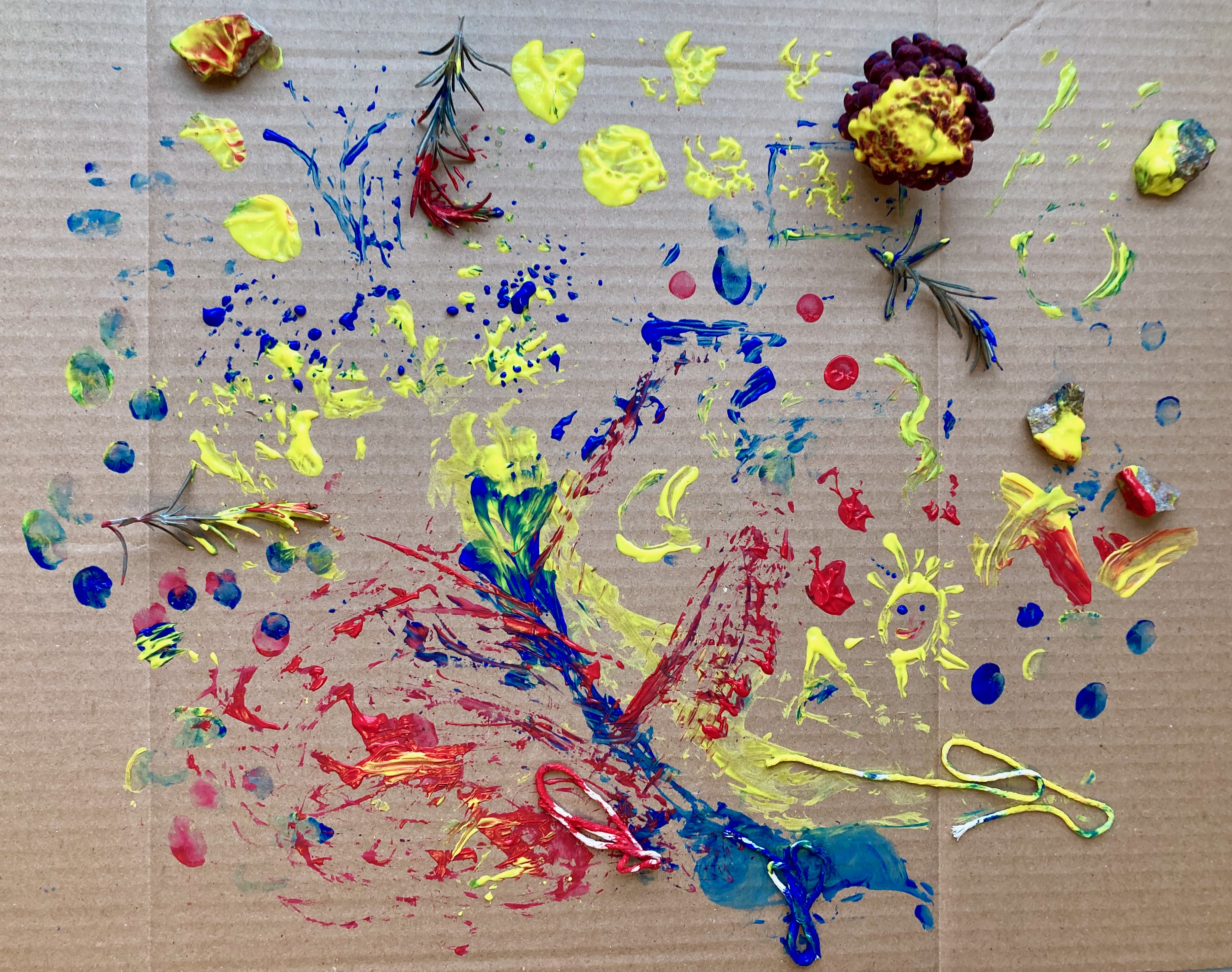
No paintbrush? You can still paint. Have fun exploring ways to paint without one.
Today we had lots of fun using sprigs of Rosemary from our over-grown plant, pine cones, stones, string and our fingers to paint on a big piece of recycled cardboard. This creative, sensory activity stimulated lots of discussion, experimenting and problem-solving:
- "What's ...
Recent Posts
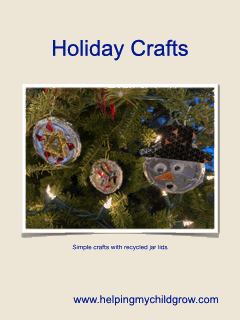
Holiday decorations using jar lids
Looking for an easy craft that will keep your kids busy?
Let them get creative with just a bit of glue, a recycled jar lid, aluminium foil and some scraps of recycled paper, ribbon, buttons etc.
A backofhousemedia.com site